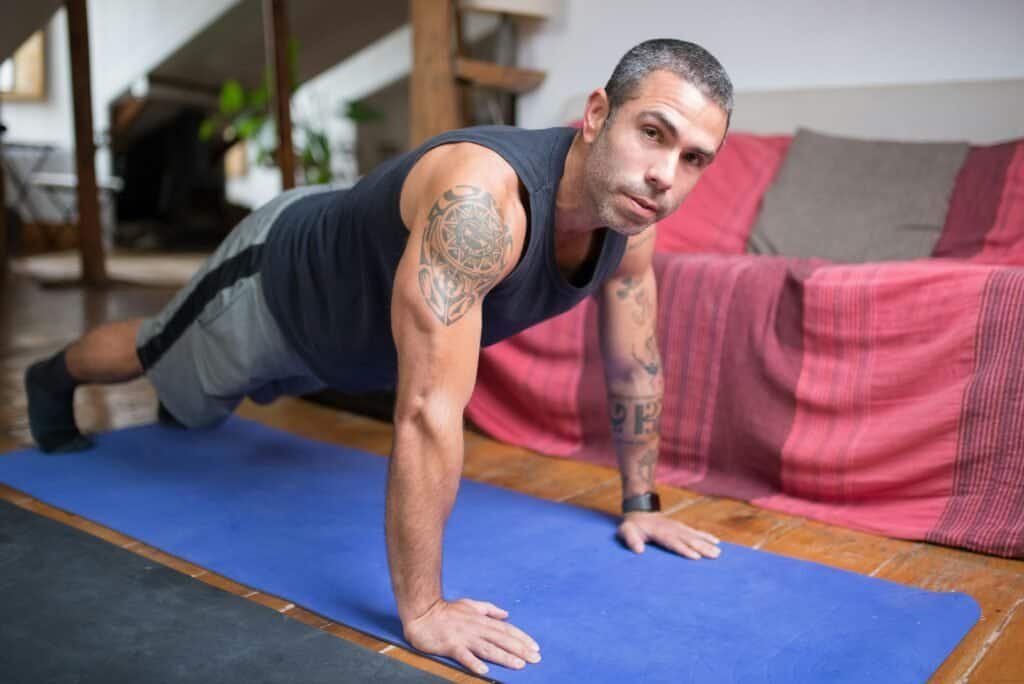Bodyweight training is one of the most accessible and effective ways to improve strength, endurance, and overall fitness. However, many beginners wonder: “how long to see results from bodyweight training?” Understanding the timeline of progress, the factors that influence it, and strategies to accelerate gains can help you stay motivated and committed.

Factors Affecting How Quickly You See Results
Results from bodyweight training are not uniform for everyone. Several variables influence how quickly you notice changes in your body and performance.
Fitness Level and Training History
Beginners often notice improvements faster than experienced trainees. If you are new to exercising, your muscles, cardiovascular system, and neural pathways adapt rapidly, leading to visible and measurable results within a few weeks. On the other hand, experienced individuals may require more time to see noticeable changes because their bodies are already conditioned.
Frequency and Consistency
Consistency is key. Working out two or three times per week may lead to slow progress, whereas following a well-structured routine four to six times per week accelerates improvements. Skipping sessions frequently or inconsistent training will delay results, regardless of the exercise type.
Diet and Recovery
Muscle growth and fat loss rely heavily on nutrition. Sufficient protein intake, balanced macronutrients, and proper hydration influence how quickly your body responds to training. Additionally, quality sleep and recovery periods allow muscles to repair and grow, enhancing visible results.
Exercise Selection and Progression
Simple exercises like push-ups, squats, and planks can yield excellent results, but progressive overload is essential. Continuously challenging your muscles by increasing repetitions, sets, or difficulty ensures ongoing improvement. Without progression, results plateau, slowing visible changes.

Timeline for Bodyweight Training Results
While individual results vary, general trends can help set realistic expectations.
Weeks 1–2: Neurological Adaptation
In the first couple of weeks, most changes occur in your nervous system rather than your muscles. Your body becomes more efficient at performing movements, improving coordination and stability. You may notice exercises feel easier, but visible muscle growth is minimal at this stage.
Weeks 3–4: Initial Strength Gains
By week three or four, beginners often experience noticeable strength gains. This is due to both neurological adaptation and the beginning of muscle fiber recruitment. Some early visual changes may appear, such as slightly firmer arms or improved posture.
Weeks 4–8: Muscle Tone and Endurance
Between weeks four and eight, more visible changes occur. Muscle definition improves, endurance increases, and fat may start to decrease if diet is supportive. Clothes may fit differently, and bodyweight movements become easier, allowing for higher repetitions or more advanced variations.
Weeks 8–12: Noticeable Muscle Growth
Around the two-to-three-month mark, consistent trainees often see substantial changes. Muscles are more defined, strength has increased, and overall fitness has improved. Bodyweight exercises may feel easier, signaling that it’s time to introduce variations like one-legged squats, decline push-ups, or plyometric movements to continue progress.
3 Months and Beyond: Significant Transformation
After three months of consistent bodyweight training, changes become more pronounced. Muscle definition is clear, endurance is higher, and overall body composition improves. Long-term adherence beyond six months can lead to substantial transformations in strength, mobility, and body aesthetics.

Tips to Accelerate Results from Bodyweight Training
Even though patience is essential, specific strategies can help you see results faster.
Implement Progressive Overload
To stimulate growth, gradually increase the intensity of your exercises. You can add more repetitions, perform advanced variations, shorten rest periods, or combine exercises in circuits to keep challenging your body.
Track Your Progress
Keep a log of workouts, sets, and repetitions. Tracking performance helps identify plateaus early and ensures progressive improvement. Additionally, taking progress photos every 2–4 weeks allows you to visualize changes that might be subtle day-to-day.
Focus on Compound Movements
Bodyweight exercises like push-ups, pull-ups, squats, and dips engage multiple muscle groups simultaneously. Prioritizing compound movements ensures maximum efficiency and faster overall results compared to isolated exercises.
Prioritize Recovery and Sleep
Muscle repair and growth occur during rest. Ensure 7–9 hours of sleep per night and avoid overtraining. Adequate recovery prevents injuries and accelerates strength gains.
Optimize Nutrition
Fuel your body with a protein-rich diet and maintain a caloric balance suited to your goals. If you aim to build muscle, a slight caloric surplus is beneficial. For fat loss, a moderate deficit paired with bodyweight training enhances muscle definition.
Mix Strength and Cardio
Incorporating cardiovascular exercises like jogging, cycling, or HIIT can help reduce body fat, making muscle gains more visible. Combining cardio and strength training can accelerate the appearance of results.
Common Misconceptions About Bodyweight Training Results
“I Should See Results in a Week”
Many beginners expect immediate transformations. While initial energy boosts and slight strength gains may be noticeable, visible changes take at least 4–8 weeks of consistent effort.
“Bodyweight Training Isn’t Enough for Muscle Growth”
This is false. Bodyweight training can build significant muscle and strength if properly structured with progressive overload. Advanced variations can challenge even experienced athletes.
“More Is Always Better”
Excessive training without recovery can hinder results. Muscles need time to repair and grow. Quality and consistency matter more than sheer volume.

Signs You Are Making Progress
Even if physical changes are slow, other indicators show you are improving:
- Exercises feel easier, and you can perform more reps or sets.
- Increased endurance during daily activities.
- Better posture and flexibility.
- Clothes fit differently or waistline changes.
- Energy levels improve throughout the day.
Tracking these non-scale indicators helps maintain motivation when visible results are delayed.
Conclusion: Setting Realistic Expectations
Understanding how long to see results from bodyweight training is essential to avoid frustration. While initial strength gains may appear within 2–4 weeks, visible muscle growth typically takes 8–12 weeks or more. Consistency, progressive overload, proper nutrition, and adequate recovery are critical for success. By focusing on gradual improvement and celebrating small milestones, bodyweight training can transform your fitness and overall health effectively, even without equipment.
Start your bodyweight training journey today with realistic expectations and track your progress to see lasting results.
Want to take your progress even further? Check out these related guides that dive deeper into the essentials you’ll need to succeed:
How to Build Muscle at Home Without Equipment: The Complete Bodyweight Workout Guide
Best Bodyweight Exercises for Full Body Muscle Growth at Home
How to Increase Workout Intensity for Faster Muscle Gains at Home
Can You Really Build Muscle With Just Push-Ups, Squats, and Pull-Ups?
The Science Behind Progressive Overload in Home Bodyweight Training
How to Create a Weekly Home Workout Plan for Muscle Building
Best Nutrition Tips to Support Muscle Growth from Home Workouts
How Long Does It Take to See Results from Bodyweight Training?
Beginner to Advanced: How to Progress Your Home Workouts for Continuous Muscle Gains
